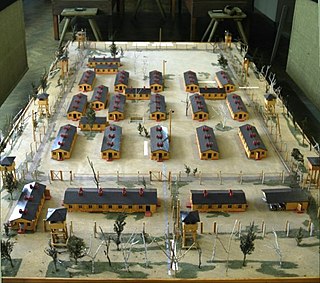
Stalag Luft III was a Luftwaffe-run prisoner-of-war (POW) camp during the Second World War, which held captured Western Allied air force personnel.
Sgt Per Bergsland was a Norwegian fighter pilot and POW in the German POW camp Stalag Luft III and one of only three men to escape to freedom in the "Great Escape".

Jens Einar Müller was a Norwegian pilot trained in Little Norway in Canada and a prisoner of war in the German POW camp Stalag Luft III. He was one of only three men to escape to freedom in the "Great Escape".
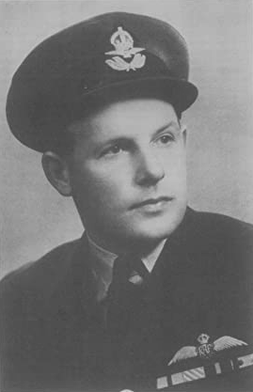
Bram van der Stok,, also known as Bob van der Stok, was a World War II fighter pilot and flying ace, and is the most decorated aviator in Dutch history.
Squadron Leader Roger Joyce Bushell was a South African-born British military aviator. He masterminded the "Great Escape" from Stalag Luft III in 1944, but was one of the 50 escapees to be recaptured and subsequently murdered by the Gestapo.

Oliver Lawrence Spurling Philpot, MC, DFC was a Canadian-born Second World War Royal Air Force (RAF) pilot and subsequently a businessman, best known for being one of the three men to successfully escape from Stalag Luft III in the escape known as The Wooden Horse.
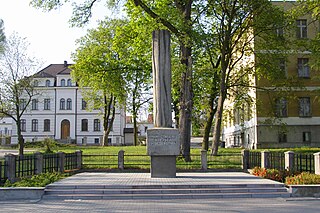
Oflag XXI-B and Stalag XXI-B were World War II German prisoner-of-war camps for officers and enlisted men, located at Szubin a few miles southwest of Bydgoszcz, Poland, which at that time was occupied by Nazi Germany.
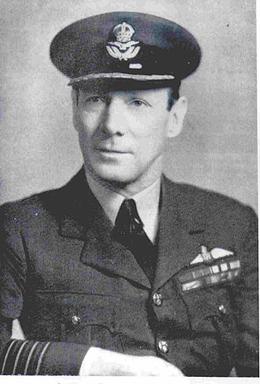
Harry Melville Arbuthnot Day, was a Royal Marine and later a Royal Air Force pilot during the Second World War. As a prisoner of war, he was senior British officer in a number of camps and a noted escapee.

Bertram Arthur "Jimmy" James, MC, RAF was a British survivor of The Great Escape. He was an officer of the Royal Air Force, ultimately reaching the rank of Squadron Leader.

Macikai POW and GULAG Camps refers to the complex of prisoner-of-war camp and forced labor camps located near Macikai (Matzicken) in German-occupied Lithuania and later, the Lithuanian SSR. The camp was opened and operated by Nazi Germany (1939–1944), and later became a Soviet prisoner-of-war camp No. 184 (1945–1948), finally transforming into a Soviet GULAG forced-labour camp (1945–1955). It was located in the village of Macikai, 2 kilometres away from Šilutė in occupied Lithuania.
Stalag Luft I was a German World War II prisoner-of-war (POW) camp near Barth, Western Pomerania, Germany, for captured Allied airmen. The presence of the prison camp is said to have shielded the town of Barth from Allied bombing. About 9,000 airmen – 7,588 American and 1,351 British and Canadian – were imprisoned there when it was liberated on the night of 30 April 1945 by Soviet troops.
James Brian Buckley, was a Royal Navy Fleet Air Arm pilot who became a notable prisoner of war during the Second World War. He died during an escape attempt on 21 March 1943.
Major John Bigelow Dodge also known as "the Artful Dodger" was an American-born British Army officer who fought in both world wars and became a notable prisoner of war during the Second World War and survived The Great Escape.

Flight Lieutenant Sydney Hastings Dowse MC was a Royal Air Force pilot who became a prisoner of war and survived The Great Escape during the Second World War.

Flight Lieutenant Walter McDonald Morison was a Royal Air Force pilot who became a prisoner of war and was sent to Colditz for attempting to steal an enemy aircraft during the Second World War.
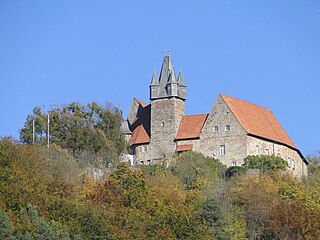
Oflag IX-A was a World War II German prisoner-of-war camp located in Spangenberg Castle in the small town of Spangenberg in northeastern Hesse, Germany.
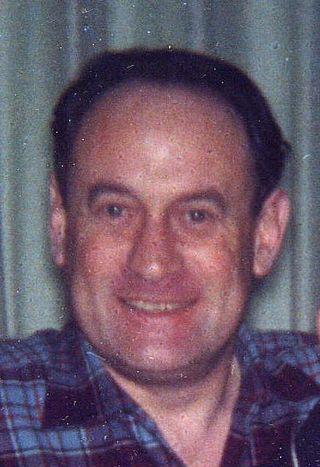
Peter Stevens was a German Jew who flew bombers in the British Royal Air Force in World War II. As an enemy alien living in London in the late 1930s, Hein assumed the identity of a dead schoolfriend in order to join the RAF at the outbreak of hostilities.
Flight Lieutenant Paul Gordon Royle was an Australian Royal Air Force pilot who was one of the last two survivors of the 76 men who were able to escape from the Stalag Luft III German prisoner-of-war camp in World War II in what became known as The Great Escape.

Squadron Leader Anthony Orlando ‘Oscar’ Bridgman, DFC was a bomber pilot of the Royal Air Force during the Second World War. He was awarded the Distinguished Flying Cross in 1940, and, during internment as a prisoner of war at Stalag Luft III, was a contributor in The Wooden Horse escape.













